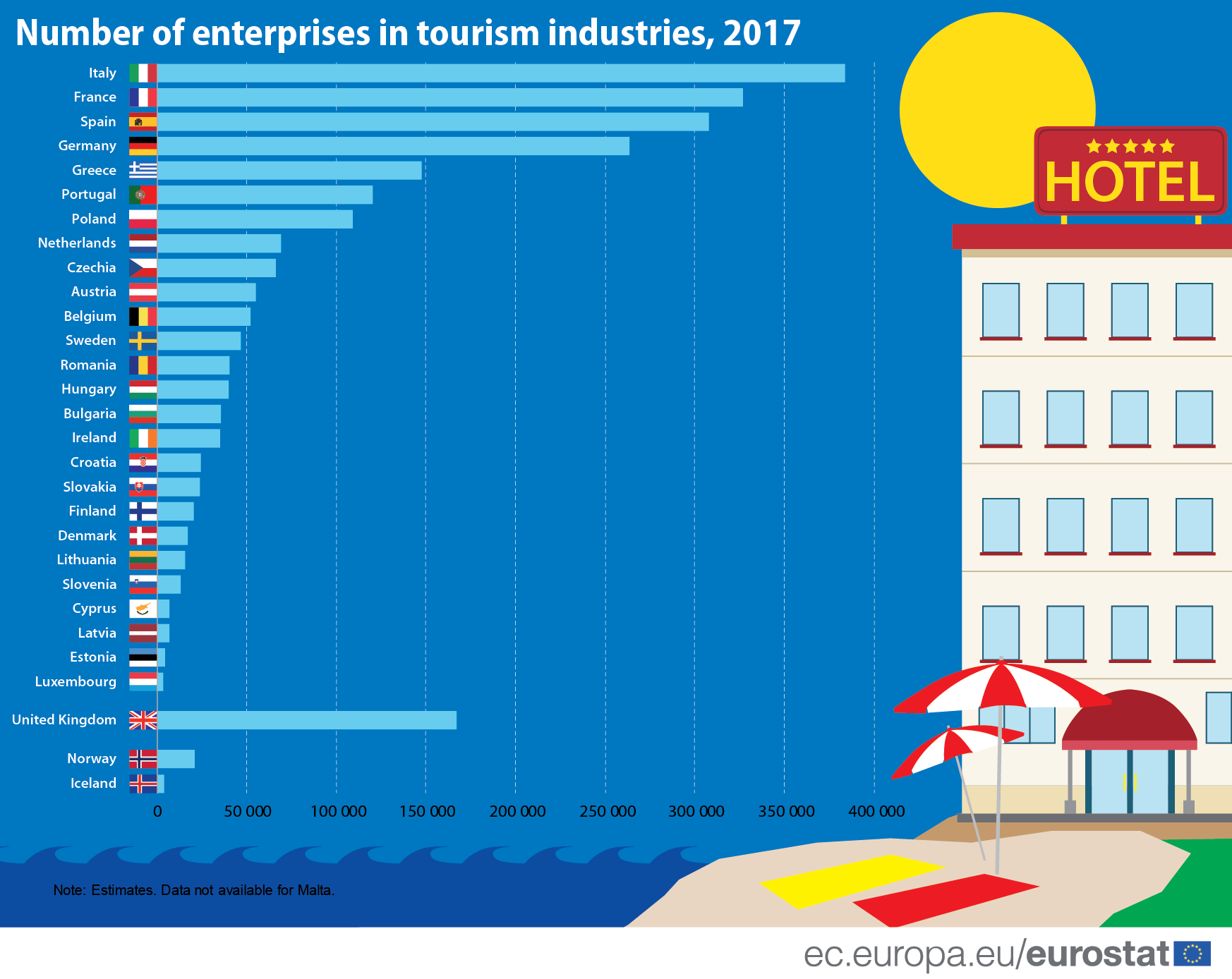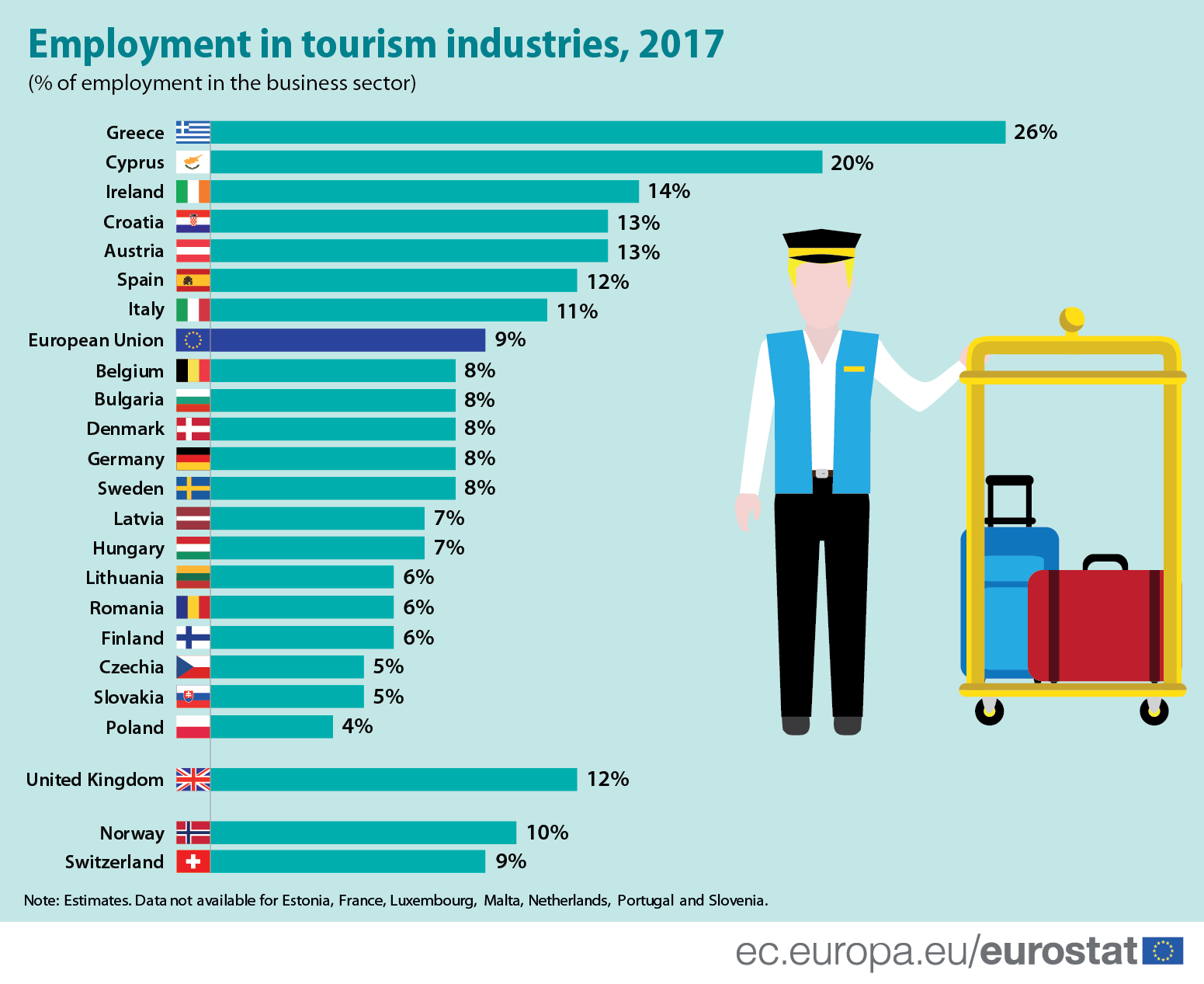
One of the first industries to be affected by the current coronavirus pandemic was the tourism industry. Travel restrictions and widespread cancellations have led to an almost complete halt in international as well as national tourism.
Based on Eurostat estimates, in 2017, there were 2.3 million enterprises in the tourism industries (these are economic activities providing an important part of their services to tourists, but also to non-tourists). This was more than one in ten of the EU’s non-financial business economy. The 11.7 million persons employed represented 9% of employment in the non-financial business economy and 22% of the services sector.
The tourism industries accounted for 3.7% of the turnover and 5.8% of the value added at factor cost of the non-financial business economy in 2017. Compared to other sectors, the tourism industries have relatively strong seasonality, with peaks in turnover in the third quarter (July, August and September) every year and a long-term upwards trend up to the last quarter of 2019 (the most recent data available).
Data source: sbs_na_sca_r2 and sbs_na_1a_se_r2
The tourism industries are an important motor for many countries' economies and labour markets. More than half (56%) of the enterprises in the tourism industries in the EU were located in four Member States in 2017: 383 600 in Italy, 326 700 in France, 308 000 in Spain and 263 400 in Germany. Other countries with a large number of enterprises in the tourism industries are Greece (147 800), Portugal (120 200) and Poland (109 100).
Data source: sbs_na_sca_r2 and sbs_na_1a_se_r2
In 2017, the tourism industries accounted for 26% of the employment in the business economy in Greece (not including the financial sector). Thereafter followed Cyprus (20%), Ireland (14%), Croatia and Austria (both 13%) and Italy (11%). At the other end of the scale, only 4% of the persons employed in the non-financial business economy in Poland were active in the tourism industry. It should be noted that employment data for the tourism industries are not available for France and a number of other EU Member States.
Germany, Italy and Spain accounted for close to one half (48%) of the persons employed in the tourism industries in the EU in 2017, with 2.5 million persons employed in the tourism industries in Germany, 1.6 million in Italy and 1.5 million in Spain.
For more information, take a look at the Statistics explained article Tourism industries - economic analysis.
Notes:
• The European Union (EU) includes 27 EU Member States. The United Kingdom left the European Union on 31 January 2020. Further information is published here.
To contact us, please visit our User Support page.
For press queries, please contact our Media Support.



